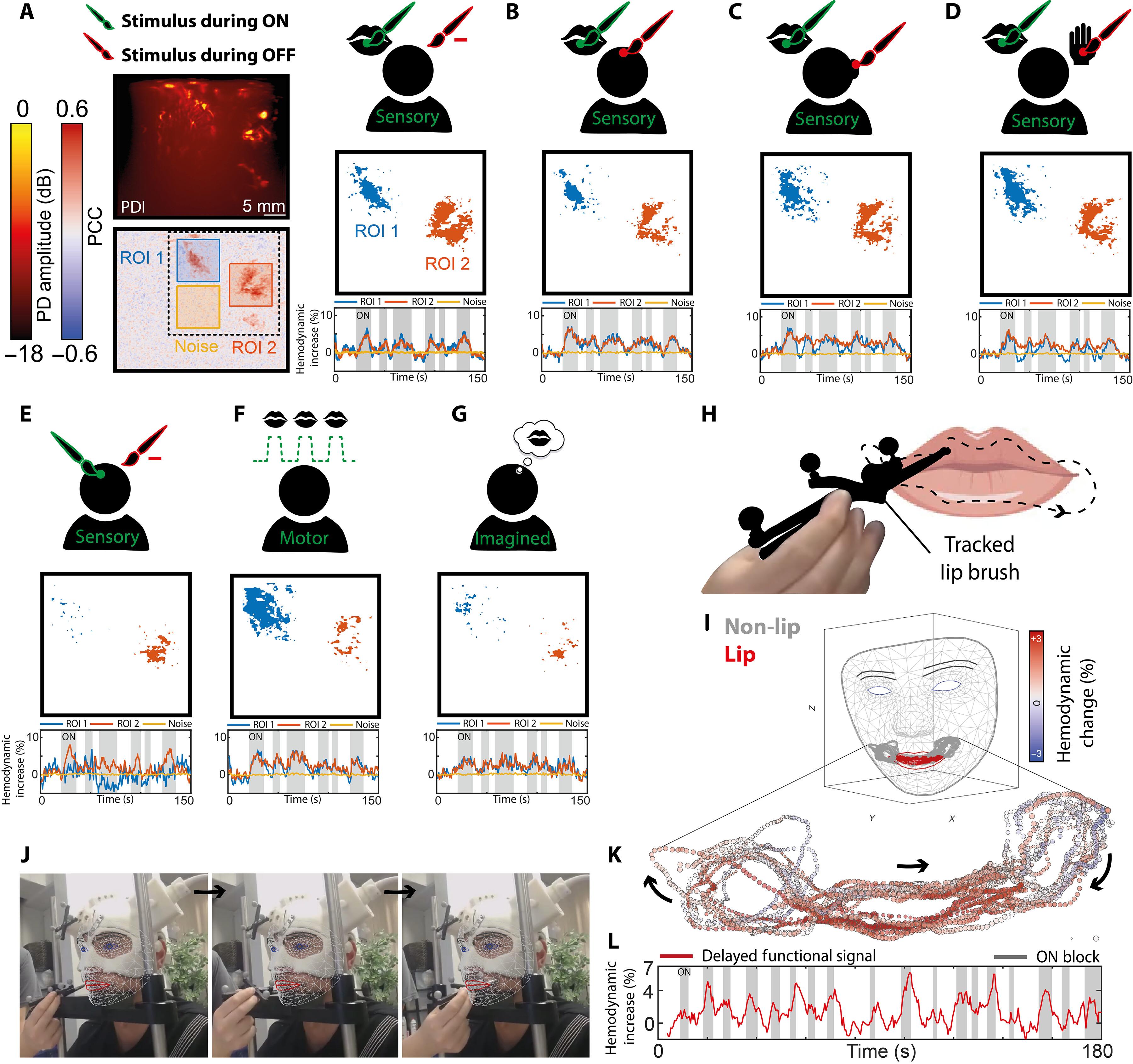使用功能超声的移动人脑成像
IF 12.5
1区 综合性期刊
Q1 MULTIDISCIPLINARY SCIENCES
引用次数: 0
摘要
想象一下,能够在现实场景中研究人类大脑,同时受试者表现出自然行为,如运动、社会互动或空间导航。超高速超声成像的出现使我们更接近这一目标与功能超声成像(fUSi),一种移动神经成像技术。在这里,我们展示了一个临床批准的超声颅骨植入物在行走过程中对大脑活动的实时fUSi监测。我们的方法使用个性化的3d打印fUSi头盔来保持稳定性,光学跟踪通过功能性磁共振成像进行跨模态验证,先进的信号处理来估计血流动力学响应,以及面部跟踪舔舐范式。这些共同的努力使我们在20个月的时间里显示出一致的fUSi信号,即使是在像走路这样的高运动活动中。这些结果证明了fUSi在现实世界中监测大脑活动的可行性,标志着基于fUSi的临床和神经科学研究的重要里程碑。本文章由计算机程序翻译,如有差异,请以英文原文为准。

Mobile human brain imaging using functional ultrasound
Imagine being able to study the human brain in real-world scenarios while the subject displays natural behaviors such as locomotion, social interaction, or spatial navigation. The advent of ultrafast ultrasound imaging brings us closer to this goal with functional ultrasound imaging (fUSi), a mobile neuroimaging technique. Here, we present real-time fUSi monitoring of brain activity during walking in a subject with a clinically approved sonolucent skull implant. Our approach uses personalized 3D-printed fUSi helmets for stability, optical tracking for cross-modal validation with functional magnetic resonance imaging, advanced signal processing to estimate hemodynamic responses, and facial tracking of a lick licking paradigm. These combined efforts allowed us to show consistent fUSi signals over 20 months, even during high motion activities such as walking. These results demonstrate the feasibility of fUSi for monitoring brain activity in real-world contexts, marking an important milestone for fUSi-based insights in clinical and neuroscientific research.
求助全文
通过发布文献求助,成功后即可免费获取论文全文。
去求助
来源期刊

Science Advances
综合性期刊-综合性期刊
CiteScore
21.40
自引率
1.50%
发文量
1937
审稿时长
29 weeks
期刊介绍:
Science Advances, an open-access journal by AAAS, publishes impactful research in diverse scientific areas. It aims for fair, fast, and expert peer review, providing freely accessible research to readers. Led by distinguished scientists, the journal supports AAAS's mission by extending Science magazine's capacity to identify and promote significant advances. Evolving digital publishing technologies play a crucial role in advancing AAAS's global mission for science communication and benefitting humankind.
 求助内容:
求助内容: 应助结果提醒方式:
应助结果提醒方式:


